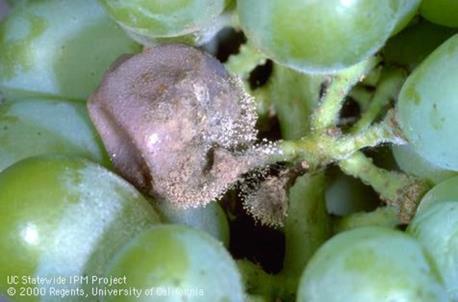The grape berry moth is an annual problem on about 50% of the grape acres around the Great Lakes in New York, Ohio, Pennsylvania and Michigan. Females glue their eggs on the berries and larvae hatch out and feed in the berries. Insecticides have been used for 100 years to control the grape berry moth and reduce the infestation from 24-30% to less than 1%. Until recently, broad-spectrum insecticides with long residuals were used to manage grape berry moth. However, new insecticides have been registered and they provide tremendous opportunities to selectively manage insect pests in grape vineyards.
“The past 10 years has seen a dramatic change in the spectrum of insecticides available for grape producers, with new modes of action and pest spectra allowing an unparalleled opportunity for growers to target specific pests for control while also minimizing the risk to non-target organisms.
There is now increased potential for realizing integrated control, since many of the most effective new insecticides have been evaluated and shown to have relatively low impact on natural enemies. For example, registration of the insect growth regulator insecticides methoxyfenozide and diflubenzuron for use in vineyards and the recent availability of the diamide insecticdes rynaxapyr and flubendiamide allow more selective and long-lasting control of lepidopteran pests without high levels of natural enemy mortality.
Acaricides have also changed from broad-spectrum to more selective chemistries. The vineyard manager now has an array of different acaricide modes of action available, many of which can selectively kill pest mites without injuring predatory species. Some of these are also systemic, thereby providing a route of exposure that further protects predators from direct contact with the acaricide.”
Authors: Isaacs, R., et al.
Affiliation: Department of Entomology, Michigan State University
Title: Vineyard IPM in a changing world: adapting to new pests, tactics, and challenges.
Source: Anthropod Management in Vineyards: Pests, Approaches, and Future Directions. 2012. Springer. Pgs. 475-480.




